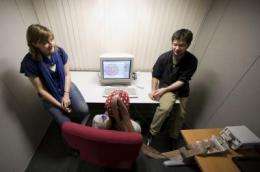Scientists explain the neurological process for the recognition of letters and numbers

"We analyzed the influence of the context given by a word when linking the physical traits of its components to the abstract representations of letters," explains to SINC Nicola Molinaro, main author of the study and researcher of the Basque Research Center on Cognition, Brain and Language (BCBL).
The results, published in Neuropsychologia journal, show that the linguistic context given by a word impacts the way in which single abstract representations of the letters that make it up are accessed, and that such access is partially independent from the physical properties of the stimuli.
"Otherwise, it would not be possible to think that a number can activate the representation of a letter when it is inserted among a string of letters that make up a word (M4T3R14L)," says Molinaro.
"We used numbers that visually resemble letters (1-I, 5-S, 7-T), and we replaced them," states the expert. The words were presented to participants during tenths of milliseconds (imperceptible to consciousness). Then, the correct words where shown so that participants could read them (for example, M4T3R14L - MATERIAL). Control strings including numbers explicitly different to letters (M9T6R26L- MATERIAL) and word identity (MATERIAL- MATERIAL) were also included.
The brain responds in three different ways
While participants read the words in silence, scientists recorded brain potentials associated to events (ERPs), which showed three main effects. The first one is that, over the 150 ms window, identical strings and strings including visually similar numbers, compared to control strings, caused a reduction in positivity, that is, in the ease of recognition.
"This effect shows that in the case of strings with letter-like numbers, the link between the visual physical representations of numbers and the abstract representations of correct letters is made automatically, given the visual overlapping among characters," points out the neuroscientist.
A second effect confirmed, at the 200 ms window, greater negativity for number conditions (M4T3R14L and M9T6R26L). "The brain recognizes that the elements that make up the strings presented unconsciously are in fact numbers, not letters, showing some specificity in the processing despite the initial visual overlapping found in the above component," he assures.
Lastly, 250 ms after the display of strings, the conditions of identity and visually letter-like numbers showed a very similar positive effect, clearly different from the effect caused by the strings with numbers that were visually different from letters (control).
"The global processing of words is very similar for strings that include letters that are properly written and for those including numbers that are visually similar to letters", concludes Molinaro.
More information: The study can be found in Neuropsychologia.

















